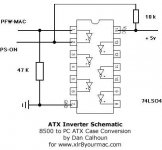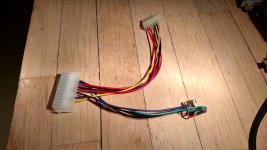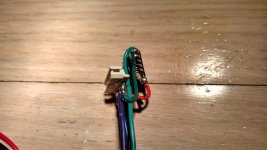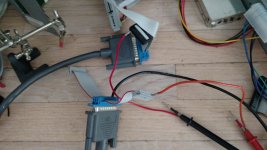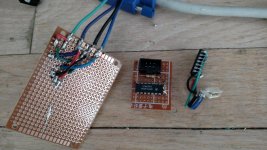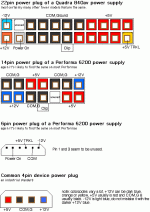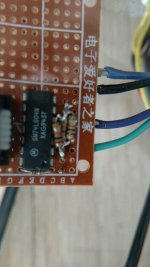Floofies
Maker of Logos
She' s alive! She's ALIVE!
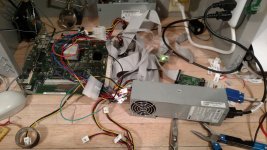
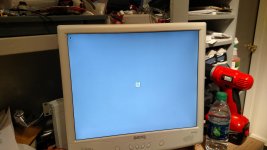
I wired up a TI 74HCT04 Inverter with the /PFW and +5VDC pins on the 6-pin header, connecting the output pin to the PS_ON# pin in the ATX PSU; it fired right up and I yelled! Pretty sure I scared the neighbors.
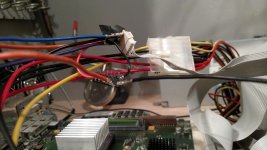
There is one issue, though. /PFW is being held abnormally high, and won't go low, or won't go low long enough for my meter to see it. This prevents the PSU from turning off, and just resets the machine when the programmer's switch is pressed. Shorting /PFW to ground manually does the job, thankfully, so I know it's functionally able to turn the PSU off. Kind if frustratng, I wonder what the issue is... I suppose it's possible the /PFW line gets pulled lower, but not to 0V, maybe keeping the inverter stuck.


I wired up a TI 74HCT04 Inverter with the /PFW and +5VDC pins on the 6-pin header, connecting the output pin to the PS_ON# pin in the ATX PSU; it fired right up and I yelled! Pretty sure I scared the neighbors.

There is one issue, though. /PFW is being held abnormally high, and won't go low, or won't go low long enough for my meter to see it. This prevents the PSU from turning off, and just resets the machine when the programmer's switch is pressed. Shorting /PFW to ground manually does the job, thankfully, so I know it's functionally able to turn the PSU off. Kind if frustratng, I wonder what the issue is... I suppose it's possible the /PFW line gets pulled lower, but not to 0V, maybe keeping the inverter stuck.
Last edited by a moderator:

